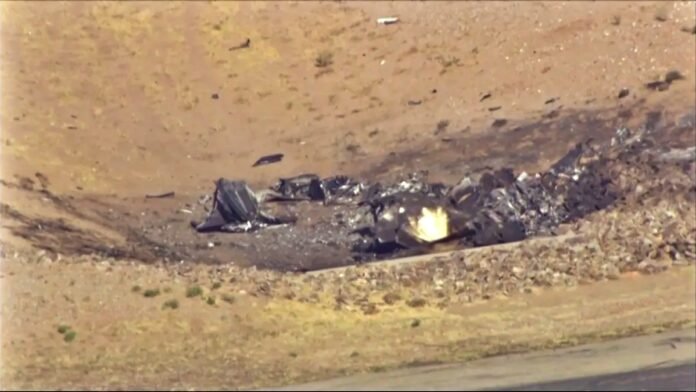
Key Points:
- Two small planes collided midair near Marana Regional Airport, Arizona, on February 19, 2025.
- The crash involved a Lancair 360 MK II and a Cessna 172S, both carrying two passengers each.
- Two individuals aboard the Lancair were killed; the Cessna landed safely with no injuries.
- The National Transportation Safety Board (NTSB) and Federal Aviation Administration (FAA) are investigating the incident.
- Marana Regional Airport, an uncontrolled airfield, lacks an air traffic control tower.
Marana: In a tragic aviation accident, two people lost their lives after a midair collision between two small planes near Marana Regional Airport in southern Arizona on Wednesday morning. The incident occurred at approximately 8:25 a.m. local time and involved a Lancair 360 MK II and a Cessna 172S, according to federal authorities.
The collision happened “upwind of runway 12,” as reported by the NTSB. Following the impact, the Lancair crashed near runway 3 and caught fire. Emergency responders arrived swiftly but were unable to save the two passengers aboard the Lancair. Meanwhile, the Cessna managed to land safely without incident, and its two occupants were unharmed.
The Marana Police Department confirmed the fatalities and expressed condolences to the victims’ families. “This is an unprecedented event for our community,” said Galen Beem, Superintendent of Marana Regional Airport. “We extend our deepest sympathies to those affected.”
Airport Safety Concerns
Marana Regional Airport operates as an “uncontrolled field,” meaning it lacks an air traffic control tower. Pilots at such airports rely on a Common Traffic Advisory Frequency to communicate their positions and avoid collisions. This setup has raised questions about safety measures at smaller airports, particularly as Marana has been experiencing rapid growth.
Efforts to establish an air traffic control tower at Marana were delayed due to the pandemic, with completion now projected for 2029. Aviation experts emphasize that pilots in uncontrolled airspace must remain vigilant and adhere strictly to federal regulations.
Ongoing Investigation
The NTSB has taken over the investigation into the crash. Officials are examining factors such as pilot communication, weather conditions, and possible mechanical failures. The FAA is also assisting in the probe.
This incident adds to a troubling series of recent aviation accidents across the United States. Earlier this year, a medical jet crash in Philadelphia claimed lives, while a Delta Air Lines plane overturned during landing in Toronto just days ago.
The identities of the deceased have not been released pending notification of their families. As investigators work to uncover the cause of this tragic collision, Marana Regional Airport remains temporarily closed.
Aviation Safety Under Scrutiny
This accident highlights ongoing concerns about aviation safety at non-towered airports. Former NTSB investigator Jeff Guzzetti noted that pilots bear significant responsibility for avoiding collisions in such environments. “Each pilot must see and avoid other aircraft while communicating effectively on shared frequencies,” he explained.
Despite these challenges, aviation experts stress that such incidents remain rare. However, this tragedy serves as a stark reminder of the risks inherent in air travel and underscores the need for enhanced safety measures at smaller airports.


















































